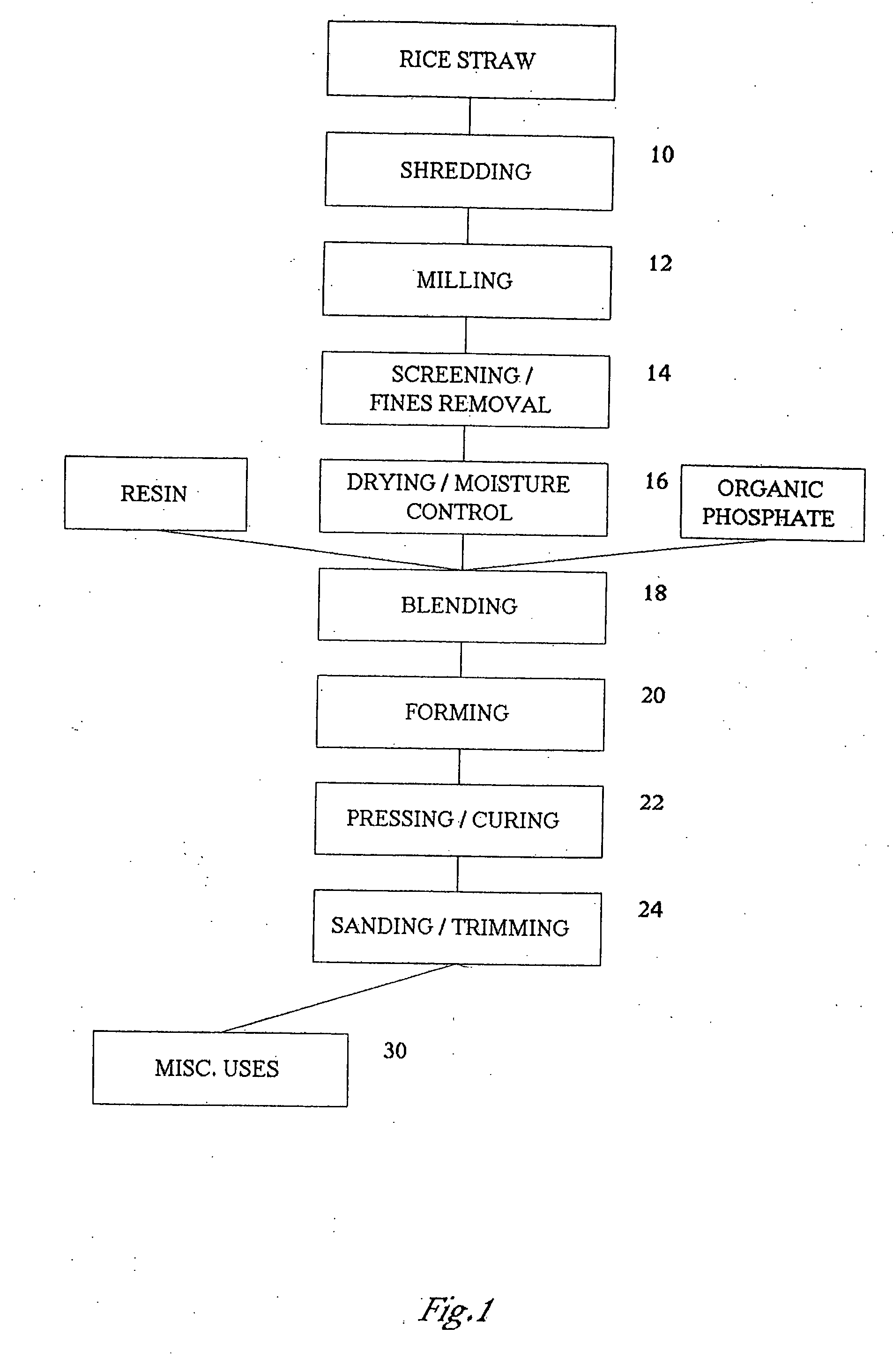Fire-resistant wall and method of manufacture
a technology of fire-resistant walls and manufacturing methods, applied in the field of building materials, can solve the problems of inability to use straw as a building material, inherently inferior, and straw has not been generally considered useful
- Summary
- Abstract
- Description
- Claims
- Application Information
AI Technical Summary
Benefits of technology
Problems solved by technology
Method used
Image
Examples
Embodiment Construction
[0026] As described above, the present invention provides a building material derived from cereal straw that provides significantly improved fire-resistance properties to such building materials as compared with traditional straw-based materials currently in use. Because straw, as a by-product of food production, has traditionally been viewed as a waste material with no commercial value, the present invention also provides economical value to a building material.
[0027] The present invention uses cereal straw in the place of comparable cellulose materials to provide a building material wall with a higher level and rating for fire-resistance. The fire retardance and highly improved fire-resistance of the present invention is significant enough that the volume of fire-resistance additives required can be reduced or even eliminated in some cases. The present invention is practiced using all types of cereal straw, especially those having a relatively high silica content, such as rice, w...
PUM
| Property | Measurement | Unit |
|---|---|---|
| thickness | aaaaa | aaaaa |
| length | aaaaa | aaaaa |
| size | aaaaa | aaaaa |
Abstract
Description
Claims
Application Information
 Login to View More
Login to View More - R&D
- Intellectual Property
- Life Sciences
- Materials
- Tech Scout
- Unparalleled Data Quality
- Higher Quality Content
- 60% Fewer Hallucinations
Browse by: Latest US Patents, China's latest patents, Technical Efficacy Thesaurus, Application Domain, Technology Topic, Popular Technical Reports.
© 2025 PatSnap. All rights reserved.Legal|Privacy policy|Modern Slavery Act Transparency Statement|Sitemap|About US| Contact US: help@patsnap.com



